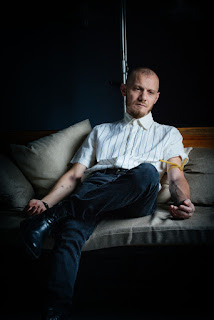What does opioid use disorder look like in your head? When contemplating that question, it’s easy to envision people withering away from substance use and abuse. Thin and ashy, track marks stippling up and down a person’s arms, and beyond. It’s an image that is likely to come into the mind of people who haven’t seen the disorder first hand; those whose knowledge of the epidemic is made up of statistics, not people.

any of us, a specific countenance not too dissimilar from your own. The disease does not discriminate, and without treatment, it only takes prisoners temporarily before cutting one’s life short. We are all eligible to become trapped in the cycle of opioid use disorder.
It’s important to keep this in mind, the disease of addiction doesn’t just affect the impoverished or minorities. The numbers indicate white and middle-class Americans have been affected the greatest by the epidemic. The people suffering are your neighbors, your friends, and your family. Even if you don’t have first-hand experience with the condition, it’s highly likely that someone in your life is battling opioid use disorder, without your knowledge.
The Opioid Epidemic Looks Like…
In the field of addiction medicine, we place great emphasis on humanizing the disease of addiction. Viewing mental illness in the same way one would look at any treatable health condition is of paramount importance. The science supports the approach and, more importantly, when people suffering from addiction receive compassion they are far more likely to seek recovery.
What’s more, the entire country can have a hand in breaking down the stigma of addiction, particularly those who have witnessed the disease with their own eyes. People who have lost loved ones can empower others to seek help by being candid about their experience. It’s a concept that hasn’t been lost on some families, like people who share what led to their loved one’s death in obituaries. We must all bear witness to the epidemic, averting our eyes to the realities of this catastrophe is no longer tenable.
In this week’s edition of The New Yorker, the photography of Philip Montgomery will be on display. The images showcase what the front lines of the opioid epidemic look like in an Ohio county that has been severely affected. Please take a moment to watch a short video on the subject below:
If you are having trouble watching, please click here.
Opioid Use Disorder Help
Philip Montgomery’s photography gives the roughly 64,000 Americans who died of an overdose last year the power to affect change in the United States. We all have a vested interest in seeing people with opioid use disorder get the help they need. At this time in the history of the epidemic, the need for encouraging people to seek treatment is, arguably, at its highest. This is because deadly synthetic opioids are far more pervasive than they were just a few years ago; also drugs like fentanyl and carfentanil are responsible for thousands of overdose deaths, and naloxone does not always reverse an overdose involving such compounds.
If you or a loved one are in the throes of opioid use disorder, please contact Hope by The Sea. We are fully equipped to assist you from detox to long-term addiction recovery. Addiction treatment is your best option for getting out from under this insidious mental health condition.

